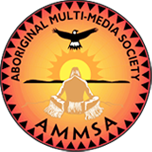Article Origin
Volume
Issue
Year
Page 11
Have you ever tried to figure out what servings and portion sizes really mean? For the untrained eye, trying to eat five to 12 servings of grain products may be seem like a daunting task. Fiona Devereaux, community nutritionist for Aboriginal Health at the Vanouver Island Health Authority, explained how a few simple rules can lead to a healthier lifestyle. Part of Devereaux's job does is to help people learn to manage the portion sizes of their meals.
"We use the HEAL method-healthy eating, active living. A lot of my job is to try and encourage activity. A lot of people focus on food, but a lot of it is the fact that people aren't moving. When people ask for specific information, I use the plate method and the hand jive. The plate method is a visual where you take a dinner plate and you separate it up into how your food should look on your plate. So half the plate should be vegetables of any kind and then the other half of the plate is separated into healthy protein food and healthy whole grain food," said Devereaux.
Another method that Devereaux uses is the hand jive, which uses the hand as a tool to determine how much you should have in one meal.
"Your fist is how much grain or starchy food you should have at a meal. The palm of your hand is how much meat you should have. Two hands cupped together is how much vegetables you should have at a time. Your one hand is how much fruit or sweet vegetable you should have at a time. The top of your thumb is how much fat you should have," said Devereaux.
When in the supermarket, Devereaux says you can use your shopping cart as a tool in making healthy choices.
"I would say look at what you're putting in your cart. The Heart and Stroke Foundation at one point talked about how to fill your grocery cart up. They talked about the big base of your grocery cart to be filled with mostly all fresh fruits, vegetables or frozen vegetables, and whole wheat grain products. The top part of part of (the cart) where the kids can sit in should be where your dairy and meat fill one and try to choose low fat and lean products. Then underneath should be the fats, and try to limit the fatty foods and junk food," said Devereaux.
Devereaux said the more colourful are the fruits and vegetables that decorate your plate, the more nutritious your meal will be. Look for dark green and reddish vegetables such as beets. Bright orange fruits such as cantaloupes are also good choices. Fruits and vegetables are an important part of a well balanced diet since they are rich in vitamin A, B and C. They are also high minerals such as fiber, folic acid and iron. Although fat should be consumed in moderation, there is a distinction between the kinds of fat that are detrimental and beneficial to your health.
"Bad fat is found in your high-fat diary products and your meat products-so anything that had a liver we always used to say. Good fats are found in nuts and seeds, vegetable oils and fish. You always want to get a nice ratio of the bad fat and the good fat but what we've seen over the years is the ratio of the bad fat just keeps getting higher and the good fats go down," said Devereaux.
The rise in processed, ready to eat meals have replaced fresh fruits, vegetables and traditional foods such as fish and berries in the diets of her Aboriginal clients. This can lead to diabetes, iron deficiency, heart disease, colon cancer and hypertension, all of which are prevalent in the communities Devereaux visits.
Another problem that Devereaux sees is the lack of knowledge about how to maintain a healthy diet. Devereaux said that because there are a limited number of nutritionists to provide education on healthy living, often it can be difficult to compete with marketing by the multi-billion-dollar food industry. Because many nutrition resources are created for non-Native people, what Devereaux does is try to create educational materials that are culturally appropriate in order to make hem more relevant. Cost is another major issue that the communities have addressed.
"A lot of people tell me that cost is an issue. We've developed a great program here that's thriving in the First Nations communities. It's the food box program, it's a bulk buying fruit and vegetable box. So you collaborate together and put in orders for these boxes, and a week beforehand you put money in. The next week, people get fresh fruit and vegetables delivered to their home. Because you're buying a whole bunch of fruit and vegetables together, you get a better deal. So you can buy a $5 box, you can buy a $10 box, you can buy a $15 box," said Devereaux.
People who do not live close to a grocery store, such as those living in Pacheedaht First Nation in Port Renfrew have come up a local solution.
"It's two hours away so they're very isolated. That's a big issue for them, so they're looking at more of the community gardens, fruit tree projects to try and get some sustainable food out there so they're not as dependent on a grocery store," said Devereaux.
For more information about nutrition visit the Vancouver Island Health Authority website at www.viha.ca/aboriginal/health/. If you would like to talk to a nutritionist in your area, contact your local health authority.
- 1211 views
